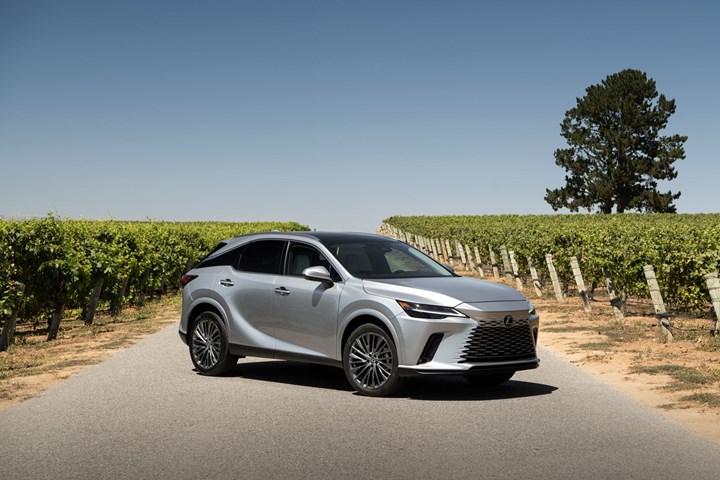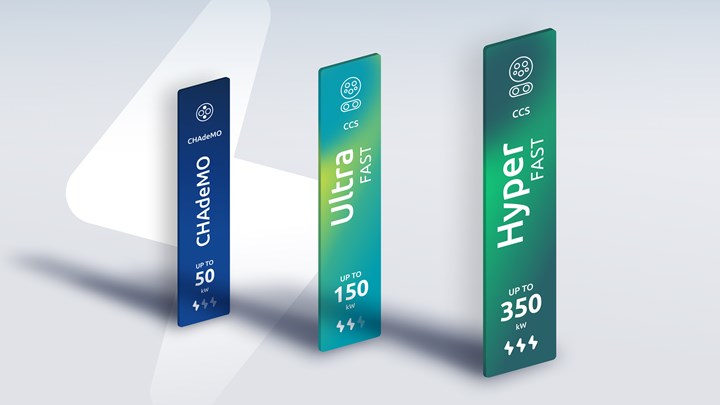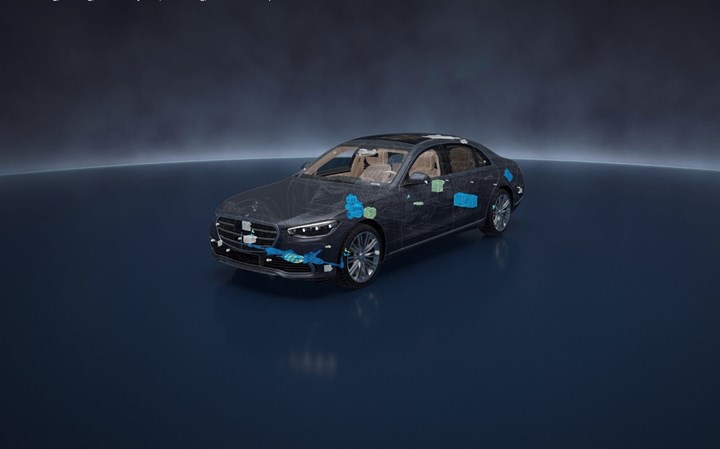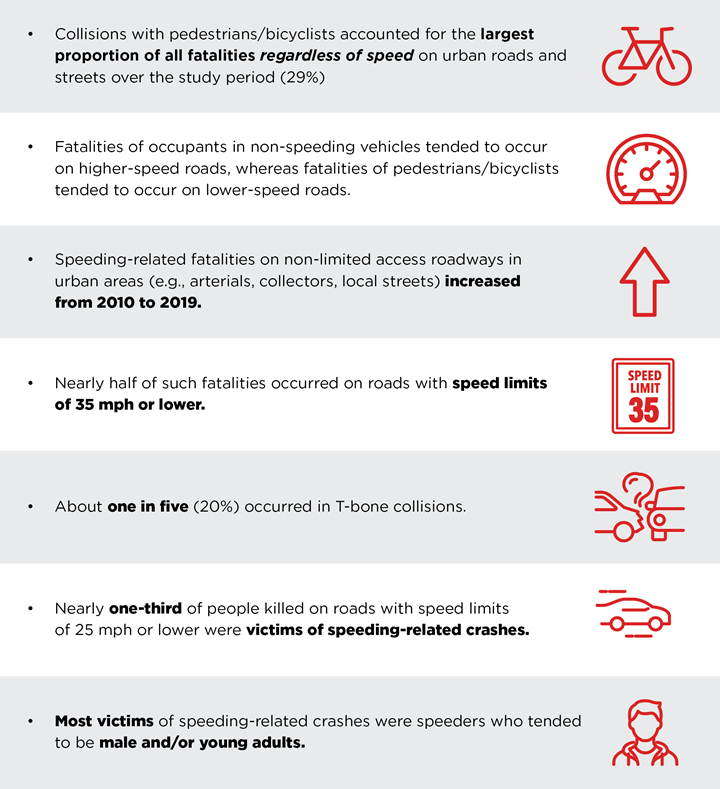on the Lexus RX, EV Labels, Mercedes & Level 3, Safety Stats, Vegan BMW, Porsche Camping, ADAS Terms & Jeep Going EV
The Lexus RX enters gen 5. . .Electrify America goes for clarity. . .AAA calculates accident stats. . .BMW going vegan for interiors. . .Porsche provides camping equipment. . more ADAS terms. . .Jeep’s EV strategy
#regulations
2023 Lexus RX: Still the One

2023 Lexus RX: Consistent. And stylish. (Image: Lexus)
“There is nothing permanent except change”—Heraclitus
What’s a quote from a pre-Socratic philosopher doing here?
Well, it came to mind vis-à-vis the 2023 Lexus RX, the fifth generation of the luxury crossover.
The first gen appeared in 1998 and while there have been visible changes over the past 24 years, there is a certain permanence to the RX: to be a consistent market leader* in a segment (up against vehicles including the BMW X5, Acura MDX, Mercedes GLE and Volvo XC90) there must be familiarity yet sufficient change in order to appeal to existing customers as well as appeal to new ones.
In the case of the RX they’re figuring that 33% of the buyers of the new model will be “RX Loyalists” and another 9% “Lexus Loyalists.”
So that gets them to 42%.
The largest group, 43%, are Conquests. This group obviously wants something new (a.k.a., change), but at the same time they probably want some of the permanence of the RX in terms of its overall reputation for quality, durability and reliability.
So for 2023 the RX is both familiar and, simultaneously, different.
The Powertrain
For example, consider the powertrain. There has been a hybrid RX since model year 2006, when the RX 400h was introduced. The hybrid configuration has been part of the model’s makeup ever since.
For ’23 it is a much greater part as there are three models, two of which are hybrids: the RX 350, the RX 350h and the RX 500h. (In addition to which, there is a plug-in hybrid. . .coming.)
The 350 has a 2.4-liter turbocharged four that produces 275 hp; it is mated to an eight-speed electronically controlled transmission.
The RX 350h doesn’t have the 2.4, it has a 2.5-liter four that produces 185 hp but, combined with the permanent magnet synchronous electric motors front and rear, contributes to a total system output of 246 hp. It is mated to an electronically controlled continuously variable transmission.
The RX 500h does have the 2.4-liter turbocharged four (it produces 271 hp) but adding to its performance is an 80-kW eAxle (combination of inverter and motor) on the rear axle, so all in there is a system output of 366 hp. The 500h has a six-speed electronically controlled automatic.
Why the two hybrids (both of which are AWD, with the non-hybrid being either FWD or AWD)?
The 350h is the efficiency play. The 500h is about performance.
That is, the 350h has manufacturer estimated fuel economy numbers of 37 mpg city, 34 highway and 36 combined. The 500h numbers are 27 mpg city, 28 highway and 27 combined. And in the AWD version, the 350 returns an estimated 21 mpg city, 28 highway and 24 combined.
The Platform
The ’23 RX is based on a different platform than its predecessor. The GA-K platform is 198 pounds lighter than the one it replaces, in part because of the use of stronger steels, including 1180 MPa for the side rockers, 1470 MPa for the roof and 2 GPa for the B-pillars.
Another aspect of the platform allows the vehicle to provide better packaging. While the overall length—192.5 inches—is the same as the previous RX, the wheelbase—112.2 inches—is an increase of 2.4 inches. The width—75.6 inches—is up an inch. And in order to provide a nod to sportiness, the height—67.3 inches—is a decrease of 0.4 inches. Thus they can say “lower and wider stance.”
Performance
A word about the RX 500h F SPORT Performance AWD version.
The AWD system is new. It is a performance-oriented system. It is called “DIRECT4.” (The other AWD system on the RX is “eFour.”)
The 80-kW eAxle is fundamental to this system
Wheel-speed, acceleration and steering-angle sensors provide input that determine what the torque split will be between the front and rear wheels, ranging from 100:0 to 20:80.
The system is calibrated so during hard straight-line acceleration the ratio goes from 60:40 to 40:60, thereby minimizing pitching and providing a feel of, well, straight-line acceleration. (Yes, the RX 500 F Sport Performance AWD is quick—but let’s not get carried away.)
In cornering there is a transition from 70:30 to 50:50 when entering the turn to 20:80 when exiting. Again, this is about keeping things feeling smooth inside the cabin, a cabin ladened with top-notch materials (e.g., in the F SPORT grades the pedals are trimmed with aluminum) and a design execution called “tazuna,” which is a minimalist approach with a sweeping, horizontal feel to the IP.
Beyond the Spindle Grille
Speaking of design execution, the styling was performed in Japan. (It is being built at both Toyota Motor Kyushu and Toyota Motor Manufacturing Canada.)
At the 2011 New York International Auto Show Lexus introduced the LF-Gh hybrid concept, a sedan. It might have gone to the annals of Concept Cars of Days Gone By were it not for one feature: It was the first instantiation of the Lexus spindle grille.
What had been separate upper and lower grille openings were brought together, tucked in at the waist. It was bold and brash.
It debuted on the fourth-generation, 2013 GS sport sedan, and when describing it Lexus personnel simply stated: “The signature spindle grille with its trapezoidal contours fully integrates into the aggressive front bumper allowing for efficient airflow.”
Clearly there wasn’t a sense that the spindle grille would become as controversial as it did.
While the ’23 RX has an evolved spindle grille, the company says that the vehicle has “a spindle body” that “expresses athleticism and finesse.”
Arguably, compared to the ’22 RX, the exterior body forms are not as sharp on the ’23, with a greater sense of flow.
Speaking of flow, Heraclitus was also the guy who said that you can’t step into the same river twice because not only has the river changed, but you have, as well.
And it is clear that the 2023 RX is a different vehicle but it retains the attributes that it has had throughout the generations, which is beneficial.
*This is a surprise. The biggest sales year for the RX—114,756 vehicles—was. . .2021. Although nowadays people generally think of 2019 as the last “normal” year for vehicle sales, that year there were 110,468 RXes sold. Certainly a solid number, but the 114,756 is remarkable.
>>>
Fill ‘er Up

Trying to make it simpler lto identify what is the right charger station to pull up to. (Electrify America)
When you pull into your local gas station you’re generally given the choice between “regular” and “premium.” Both grades are clearly marked.
Perhaps taking something of a page from its liquid fuels competitor, Electrify America and Electrify Canada, which are in the process of having >1,800 charging stations and >10,000 chargers by 2026, has come up with a labeling approach.
In this case the terms are “Ultra Fast” and “Hyper Fast,” which are, in a sense, analogous to “regular” and “premium” in that Ultra provides charging at up to 150 kW and Hyper 350 kW. (They are also still offering CHAdeMO charging.)
There is also a build out of “Balanced” chargers, typically one power cabinet with two connectors, based on 350-kW systems.
As the company explains:
“if two EVs are charging at the same time, each on Balanced chargers, but the first EV requires a much lower level of power, the chargers will Balance the energy dispensed to provide the maximum level of charging power that the lower-power vehicle will accept. At the same time, the second charger may allocate the remaining power to a second, higher-powered EV at the output that it can accept.”
This whole balancing act is something that those who are used to pumping gas are going to need to get used to (i.e., did you ever notice a decrease in the pumping speed at a gas station when someone started pumping gas directly on the other side of you?)
Consideration
While even Hyper Fast isn’t as quick as that pump at your local beef jerky and burned coffee emporium—in 1996 a U.S. regulation went into effect limiting fuel dispensing rates to 10 gallons per minute (consider: if the average light duty vehicle in the U.S. gets 25.7 mpg, then in a minute a range of 257 miles)—there is something to keep in mind:
You can’t spill electrons on your shoes and smell like fuel all day.
>>>
One Is Not Enough for Level 3

Mercedes thinks that if a vehicle is going to be driving itself, then there needs to be not only multiple sensor types, but redundancy in the architecture. (Image: Mercedes-Benz)
“We are convinced that redundancy is the right approach for Level 3 automated driving and beyond. When it comes to sensors, we also see the use of LiDAR alongside radar and cameras as particularly indispensable. We can compensate for the situation-dependent deficits of one sensor with the characteristics of another. Relying on just one type of sensor would not meet Mercedes-Benz’s high safety standards.”—Markus Schäfer, Member of the Board of Management of Mercedes-Benz Group AG, Chief Technology Officer, responsible for Development and Procurement.
So for SAE Level 3 driving, Mercedes’ DRIVE PILOT system is predicated on an architecture that provides redundancy for:
- Braking
- Steering
- Power supply
- Some sensors
What’s more, there is algorithmic redundancy, too.
For a given DRIVE PILOT system there are more than 30 sensors deployed.
The system can take over driving “under certain conditions and on suitable sections of the German autobahn.” This would be a scenario where there is heavy traffic and the speeds are not greater than 37 mph.
If there is a failure of a primary system, then DRIVE PILOT returns the operation of the vehicle to the driver.
And if there is a driver failure (e.g., a medical problem), then the system will initiate a safe stop.
>>>
Sobering Safety Stats

Keep these stats in mind next time you get behind the wheel. (Image: AAA)
Fun fact: more than 70% of the 4 million miles of public access roads in the U.S. are rural, according to the Federal Highway Administration.
Not fun fact: “Prior to 2015, there were more traffic fatalities in rural areas than in urban areas in the U.S.; however, between 2010 and 2019, fatalities in urban areas increased by 34%, while those in rural areas decreased by 10%. Consequently, in 2019, there were 19,595 traffic fatalities in urban areas compared to 16,340 fatalities in rural areas.”--Traffic Fatalities on Urban Roads and Streets in Relations to Speed Limits and Speeding, United States, 2010-2019, AAA Foundation for Traffic Safety
AAA points out that things aren’t getting better. It cites National Highway Transportation and Safety Administration (NHTSA) figures that have it that in the first quarter of 2022 there were 9,560 deaths in motor vehicle traffic crashes, the highest number of first-quarter fatalities since 2002.
Ever wonder about the efforts by OEMs and suppliers to achieve higher levels of driver assistance capabilities?
There are 9,560 reasons why—a number that is undoubtedly higher right now.
>>>
BMW Going Vegan

Various vegan materials that are going to be deployed in BMW interiors. (Image: BMW)
Although the leather-wrapped steering wheel used to be a notable feature, particularly in cars that were meant to be driven with a sense of alacrity, that may be on its way to becoming retired along with the buggy whips that were meant to make the horse go faster.
The BMW Group will launch vehicles with vegan interiors for BMW and MINI models in 2023.
BMW is pursuing overall carbon neutrality by no later than 2050.
The company has determined that replacing leather with alternative materials can reduce CO2e emissions by 85%.
According to BMW, the emissions for something like the leather for a steering wheel came from both the methane related to cattle rearing and the processing of the cowhide.
“With a steering wheel made from a high-quality vegan surface material, we aer fulfilling the wishes of our customers who do not want to make any compromises in terms of look, feel and functionality. The innovative material withstands wear and tear caused by abrasion, perspiration and moisture, and has all the desirable properties of leather.”—Uwe Köhler, head of Development, Body, Exterior Trim, Interior, BMW Group
Apparently, the only difference between the vegan wheel and one based on a cow will be the graining of the steering wheel trim.
>>>
Camping Porsche Style

Yes, you can get a camper for the top of your Porsche. But would you? (Image: Porsche)
With all of the interest related to a Porsche IPO, something perhaps more startling may have slipped by:
A Porsche roof tent.
That’s right, this is a structure that was developed at the Porsche Weissach Development Center and co-designed by Studio F.A. Porsche in Zell am See, which has designed everything from dental chairs to an apartment building in Istanbul.
This two-person tent, which has a floor measuring 210 x 130 cm, can be fitted to the roofs of Macan, Cayenne, Panamera, Taycan, and 911 models—though for the last-named, not GT, Cabriolet and Targa models. (Let’s face it: it would be a bit tricky to attach it to a convertible.)
It is fitted into a hard case. Open safety latches, lift the case slightly and two gas-pressure shock absorbers help open it up. The floor is folded out and stablized with an integrated telescopic ladder. Four poles are then used to firm up the tent structure.
Numbers
The unit weighs about 56 kg. The maximum load—people and luggage—is 190 kg for vehicles with roof rails; 140 kg for those without.
The tent from Porsche Tequipment retails for €4,980.
In case you’re wondering: the top speed a vehicle can be driven with the roof tent in place (in the case, not folded out for habitation) is 130 km/h (81 mph).
What Would Make You Cringe?
Two questions:
What would make you feel more uncomfortable:
- Climbing on the roof of your not-inexpensive sports car
- Driving at 80 mph with that stylish case affixed to the roof, wondering about the security of the straps. . .
(I’d be two for two.)
>>>
ADAS Terms to Know (6)
This is the final in the series of nomenclature defined by AAA, Consumer Reports, J.D. Power, National Safety Council, PAVE, and SAE International to make things more understandable regarding autonomous tech:
OTHER DRIVER ASSISTANCE SYSTEMS
Automatic High Beams Switches between high and low beam headlamps automatically based on lighting and traffic.
Head-Up Display Projects information relevant to driving into the driver’s forward line of sight.
Night Vision Improves forward visibility at night by projecting enhanced images on instrument cluster or head-up display.
>>>
Jeep Opens Up Space

The Jeep Recon, a forthcoming battery electric vehicle from the brand that intends to dominate the EV SUV space. (Image: Jeep)
“We look at it as white space.”—Ralph Gilles, head of design, Stellantis, on the forthcoming Jeep Recon.
The Recon is a new vehicle in the Jeep lineup. A full battery electric vehicle. It will go into production in North America in 2024.
This 4x4 will feature such things as Jeep Selec-Terrain traction management, e-locker axle tech, underbody protection, and, of course, the ability to have its doors removed.
The Recon is meant to be able to handle trails as well as highways that aren’t necessarily blue.
Gilles acknowledges that the Recon has similarities to the Jeep Wrangler.
Which, from the Jeep perspective, is not a bad thing, as the Jeep Wrangler 4xe is the best-selling plug-in hybrid in the U.S. and the Wrangler model overall is second only in Jeep sales to the Grand Cherokee (which also has a plug-in hybrid version).
The Recon is part of Jeep’s initiative to become the global leader in SUV electrification: Christian Meunier, Jeep CEO, said the plan is to have 50% of U.S. sales and 100% of European sales to be full battery electric vehicles by 2030.
About the White Space
Presumably by having a new offering (Recon) along with one that has plenty of heritage (Wrangler) Jeep will be able to expand its share of market in the SUV space rather than were it to simply put a BEV powertrain in the Wrangler.
The difference can contribute to expansion.
And Speaking of Large
Along with the Recon Jeep introduced what is code-named “Wagoneer S.”
It is a large BEV SUV. It is based on a new EV platform.
While there is resemblance to the non-EV Wagoneers, this model has distinctiveness that’s not limited to the powertrain, such as a spoiler that sweeps over the top of the backlight and an LED-intensive front fascia.
In this case, as the brand is rebuilding the resonance of the Wagoneer marque, assuming that it sticks with that name when the order books open next year, they’re working a brand extension play here with the nameplate.
And What We Won’t Get
It is interesting to note that there is an awareness of what will play where: in Europe—as well as Japan and South Korea--they are launching the all-electric Jeep Avenger in 2023, a compact SUV. Because it is smaller than the Renegade, the smallest Jeep in the U.S. market (the Renegade is 166.6 inches long, 74.2 inches wide and 66.5 inches high), the Avenger will not be offered in the U.S. Presumably this is all about the size, not potential confusion with the out-of-production Dodge Avenger.
RELATED CONTENT
-
On Charging, Sustainable Tires, the Lincoln Nautilus and more
Charging at home, driving on plastic, cameras for exterior, Fisker and Foxconn, and the Lincoln Nautilus reviewed
-
On Audi and Volvo's Green Initiatives, Bentley Design and more
Audi takes to the river to reduce plastic waste, Volvo focuses on a new category of consumers, Bentley once used a Bob Ross-approach during styling development, why Ford’s BlueOval City is the past brought to today, and some new terms that you should keep in mind
-
Increasing Use of Structural Adhesives in Automotive
Can you glue a car together? Frank Billotto of DuPont Transportation & Industrial discusses the major role structural adhesives can play in vehicle assembly.


.jpg;width=70;height=70;mode=crop)






